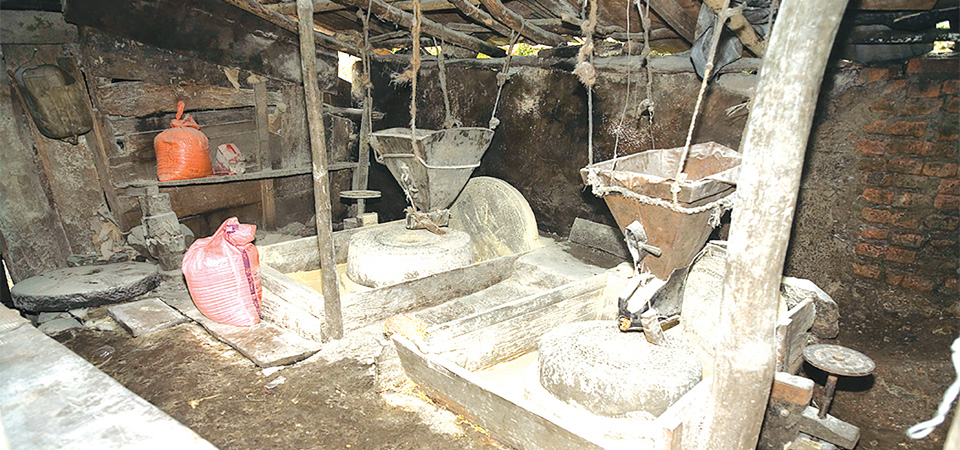Ghatta: Traditional Watermills

Persijs Muiznieks
Over time, people have become accustomed to the vagaries of climate and permanently settl ed in the foothills. This is a rather dangerous way of life in the mountains. Snowy peaks in the spring begin to melt and the bubbling mountain river runs at a scary speed, wiping down everything in its path. Sometimes people have had to give up in front of nature, and at the beginning of the spring, they would embark on a nomadic way of life. However, the mountains are always captivating them to come back.
Freely Available
One of the reasons is freely available natural resources, – and it is water. Like a small river or tributary, it flows past each hill house. Water brings energy to the household. It is bracing and crystal clean. Rich in various minerals. It should not be subjected to thermo-treatment before use. Humans have understood the mighty power of the water and started to use it for domestic work, and namely – grain milling.
In almost every house in the mountains, you can find millstones for grinding grain. Within a short period, turning the millstone by hand, you can quickly prepare a small portion of flour for lunch. However, much more effort and time will be required to grind a whole sack of grain. In this case, a very effective is the watermill, which Nepali also called pani ghatta. The place where the stream has created about one metre wide waterfalls has installed (in modern language speaking) turbines.
A round wooden clog, where embedded 6-8 blades. The turbine, in turn, with a long iron or a round wooden handle, is connected to the millstones. The gear has a different technical performance. For those who can afford more, the turbine is being mounted on a variable level mechanism. When grinding does not take place, the turbine is lifted out of the water. To connect the turbines to the millstone, a long leather strap is used, which is applied to coils of different diameters. In this way, changing the speed of rotation of the stone.
The grain milling principle is simple. The intended product is com pressed between two stones and pulverised. The longer the grinding takes, the finer the product until it resembles coarse flour. Millstones have a round shape. On the stone, the surface is etched with the small channels coming out from the centre and ends at the edge of the stone. At its centre is a small hole, where to pour grain.
Once the stone starts to turn, the product goes into the opening of the stone in the centre, and grinding is going on. Grains turn into flour and through the small channels in stone are squeezed out and come in a special box or bag. Milled grain fineness depends not only on grain quality (the degree of humidity) but also on the fine gutters, engraved millstone. Although milled flour quality does not meet standards, it contains many more minerals and vitamins, as opposed to store-bought flour. Bread baked with coarse flour is much healthier and does not affect body weight.
Mountain valleys, where there is a favourable climate, the mountain people engaged in cattle breeding and grain cultivation. The ghatta is an essential complement to the grain-growing business sector. Those who deal with constant grain milling use strong water paths. Above it, hanging powerful turbines. Around the mill, the site is built stonewall with the roof covering. It is like a small factory that provides continuous grain milling.
Turbine power is also used for other small household purposes, as a tool for sharpening, etc depending on the turbine power, during the day is likely to grind a little more than one sack of grain. However, there are grain mills, using modern turbines made of steel, their capacity is much greater. But Nepali sometimes finds other practical approaches, which, of course, requires manual work, and is quite heavy. The weight of the product is much smaller, however, this approach allows to prepare the product much faster and even bring it to the table immediately.
Grinding Device
It is the same device, similar to a mini-hand-operated grinding device. All the weight of turning the millstone is taken over by hand. Slowly, adding the grain with one hand, the other hand turns the top stone. A housewife from Jhapas district, singing quietly to herself, grinds peas.
It is just stamping a product. The harder the product, such as rice, nuts, peace,- the heavier the stamp is suitable, which should be held in both hands. Although it is not possible to grind grains to a powdery mass, the coarse grind is many times more fertile with minerals and retains its aroma. The larger or smaller size of stamps with a bowl is like a part of an everyday kitchen.
Hydropower can be used quite rationally, not only for grain milling but also for oil extraction, pumping water to another tank and even as a small turbo-generator for economic purposes.
(Persijs is a Finnish photojournalist currently staying in Nepal)
Recent News

Do not make expressions casting dout on election: EC
14 Apr, 2022
CM Bhatta says may New Year 2079 BS inspire positive thinking
14 Apr, 2022
Three new cases, 44 recoveries in 24 hours
14 Apr, 2022
689 climbers of 84 teams so far acquire permits for climbing various peaks this spring season
14 Apr, 2022
How the rising cost of living crisis is impacting Nepal
14 Apr, 2022
US military confirms an interstellar meteor collided with Earth
14 Apr, 2022
Valneva Covid vaccine approved for use in UK
14 Apr, 2022
Chair Prachanda highlights need of unity among Maoist, Communist forces
14 Apr, 2022
Ranbir Kapoor and Alia Bhatt: Bollywood toasts star couple on wedding
14 Apr, 2022
President Bhandari confers decorations (Photo Feature)
14 Apr, 2022










